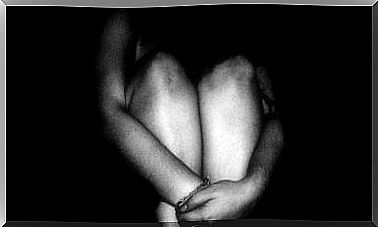Gerstmann Syndrome And Finger Agnosia

Gerstmann’s syndrome is a rare neurological disorder. It is best known for its most notable feature: the patient’s inability to recognize their own fingers.
However, apart from this symptom, it is a much more complex and acquired disease. This means that the symptoms occur after suffering some form of injury or illness.
The condition is named after Josef Gerstmann, a young assistant in the neurology department at the University of Vienna, Austria. This student described a series of symptoms in a woman who had suffered a stroke. From then on, the condition, consisting of agraphia, finger agnosia, and acalculia, bore his name.

The causes of Gerstmann’s syndrome
First of all, we should note that most of the reported cases stem from a vascular problem. This seems to be the main cause of this syndrome, which is characterized by the inability to operate or recognize the fingers. These are the most common symptoms of this condition:
- First of all, finger agnosia: the inability to recognize the fingers. The patient feels as if he does not have his fingers.
- Agraphia: Along with the above symptom, these patients lose their ability to express themselves through writing.
- Acalculia: Patients with Gerstmann syndrome also lose the ability to perform simple arithmetic operations.
- Finally, disorientation: the inability to orient correctly on a spatial level and to confuse or not recognize the distinction between left and right.
Acquired damage in Gerstmann syndrome
In 1930 Gerstmann finished describing the syndrome after studying the injuries of his patients. He found that most had damage in the dominant parietal lobe, more specifically the angular gyrus.
The Penfield homunculus, a somatosensory ‘map’ of the body, is located in the parietal lobe. Within the parietal lobe there is a specific area focused on the fingers. This area is much larger in relation to the rest of the body, due to the importance and amount of nerve endings our hands have.
Gyrus angularis
This area, especially affected in Gerstmann syndrome, occupies the lower part of the parietal lobe. It is related to language interpretation, which is the assignment of a common code for visual and auditory information.
Most often, patients with this syndrome have vascular lesions in the left middle cerebral artery, which irrigates the angular gyrus.
Clinical Features
We should also clarify that Gerstmann’s syndrome often occurs in an incomplete way. This means that the three main symptoms do not need to be present for a diagnosis to be made.
For example, in many cases there is no agraphia. Instead, semantic aphasia is very common. This is a lack of understanding of the logic of grammatical structures.
Gerstmann’s Syndrome Today
Since the syndrome was described many years ago, scientific advances have discussed many of its components. Scientists are currently discussing the organic basis of the syndrome. They represent other areas of the parietal lobe in the etiology of the syndrome.
Most patients have lesions in the left parietal lobe, the dominant hemisphere in most of the right-handed population. Therefore, abnormalities at the cortical level occur in areas of complex processing.
Diagnosis
The main disciplines dealing with the diagnosis of this syndrome are neurology and neuropsychology. Suspicion of this syndrome often becomes apparent when affected patients are required to perform tasks involving finger recognition.
From a neurological point of view, diagnosis begins with exploratory tests. Then doctors will confirm it using tomography or magnetic resonance imaging that allows them to see damaged tissue.
In addition, neuropsychology is responsible for evaluating and subsequently assessing impaired cognitive abilities through clinical observation.

Therapy
There are different treatments for each responsible specialist. In short, a combined neurological and psychological approach is always necessary.
- Neurological treatment: The approach targets organic damage through standardized procedures. Treatment will then depend on whether the cause was vascular or due to a brain tumor.
- Neuropsychological treatment: This approach works on the cognitive functions affected by the injury. In addition, given the variability of symptoms, treatment should be individualized and multidisciplinary.
- Psychoeducation: Information and awareness about the syndrome are very important to work on the underlying aspects.
Finally, doctors and experts should focus both treatments on the patient’s functional recovery. Therefore, their goals should be the pursuit of optimal functioning and they should discourage isolation.
Although Gerstmann’s syndrome is rare in the general population, it does attract the attention of researchers and specialists because of the characteristics of the syndrome.
The interest comes from the fact that the correct functioning of the brain also depends on the correct functioning of the vascular system. Therefore, all activities that imply a risk factor for the circulatory system are also a danger to the nervous system.









